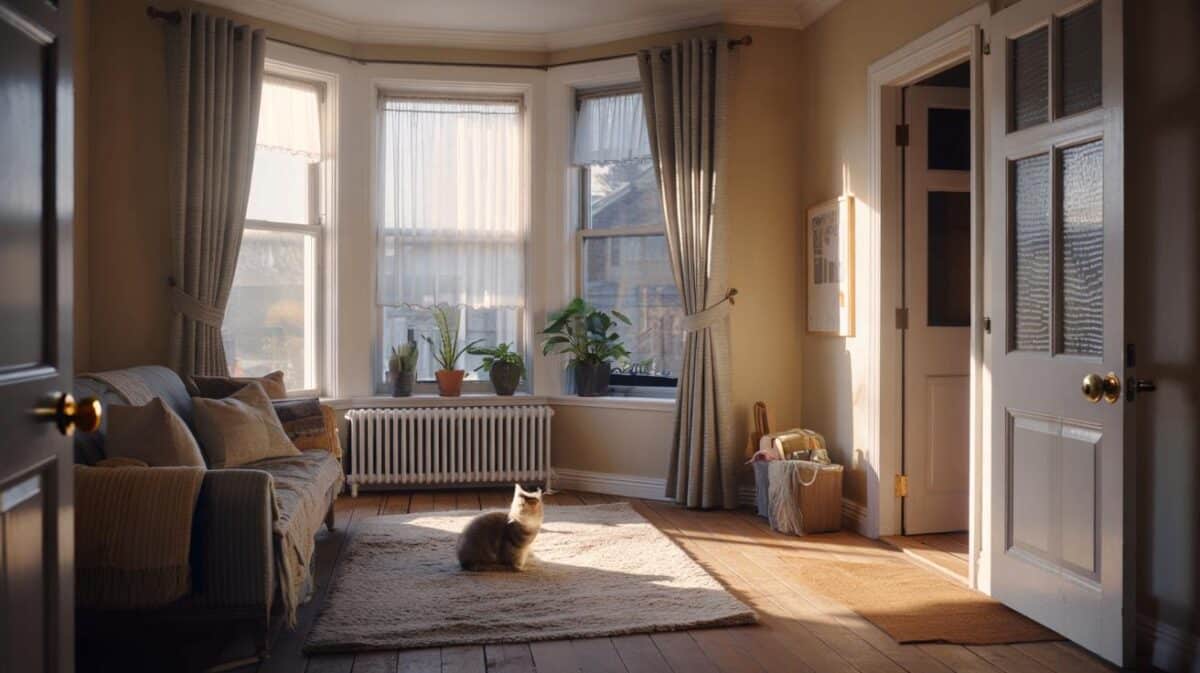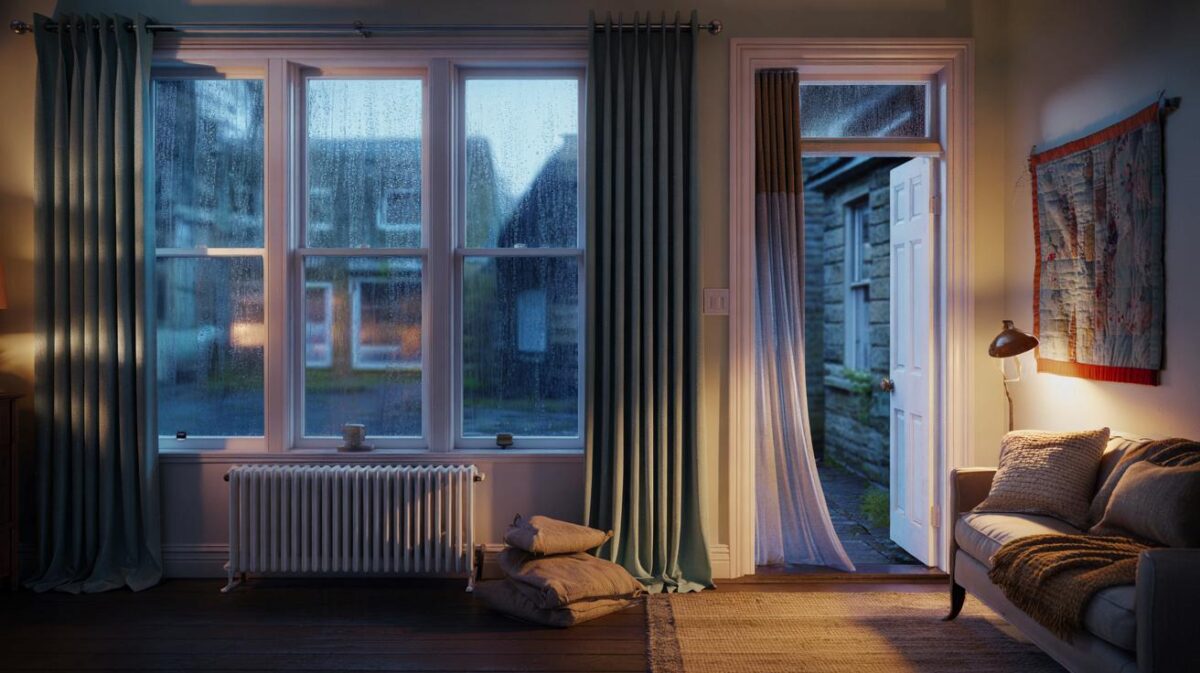One hard frost, a length of trapped water, and suddenly you’re staring at a split pipe and a wet patch creeping across the kitchen ceiling. The fix costs a fortune and the mess steals your weekend. This is the problem lurking on the patio right now, hiding in that shiny brass tap you barely notice.
At first light on my street, someone always tries the outside tap while the kettle warms. You hear the lever flick, then nothing. A second later there’s a strange, rubbery groan from behind the brickwork, the kind that turns your stomach because you know it’s water in the wrong place. I’ve watched a neighbour in slippers sprint to the stopcock, half laughing, half swearing, while their dog looks completely confused. Then the hiss begins.
Why taps and pipes freeze so fast
November is sneaky in Britain. One day you’re hanging washing in a mild breeze; the next you wake to frost glittering on the hosepipe, and the tap is solid with rime. We’ve all had that moment when you think, “It’s not that cold yet,” and leave the hose connected after rinsing the bins. Metal chills fast, water lingers in elbows and valves, and the first sharp frost takes no prisoners.
Plumbers see it coming like clockwork. Call-outs jump the morning after the first big freeze, and insurers brace for claims that feel avoidable in hindsight. During the 2018 “Beast from the East”, the Association of British Insurers said payouts for burst pipes topped £190 million in weeks, with thousands of homes affected. One cracked fitting can drip quietly for hours before anyone notices. By the time you do, it’s plaster dust, towels everywhere, and a nervous chat with your bank account.
Ice expands as it forms — roughly 9% — and pipes don’t love that surge. The weak point gives first: a thread on the back of the tap, a plastic elbow, a tiny split in soft copper just inside the wall. A connected hose traps water against the valve so the ice can’t push out. Add a breeze across bare metal and the temperature at the tap face dives lower than the forecast. It’s a perfect little pressure cooker, outdoors.
The 10-minute winterising routine
Here’s the simple method that works on almost every UK home with an outside tap: find the internal isolation valve for that outdoor line, turn it off, and open the garden tap to drain. The isolator is often a small quarter‑turn lever or slotted screw valve near where the pipe leaves your kitchen or utility. Once the line is off, crack the outside tap fully and let it drip until it stops. Disconnect the hosepipe and leave the tap slightly open so any remaining droplets can expand without strain. Turn off the isolation valve, then drain the line — that’s the whole trick.
Wrap exposed pipework with foam lagging and pop a tap jacket over the head. Those little quilted covers look daft, yet they keep the wind off and warmth in. If your garden tap has no isolator, a plumber can fit one in under an hour, or you can use a proper insulating cover as a stopgap. Don’t forget any side return pipes or garden rooms plumbed on summer weekends and ignored since. Let the water run out now, not into your wall at 3 a.m.
There are classic mistakes, and they’re almost endearing because they’re so human. People leave the hose clipped on “for convenience”, which quietly creates a water lock against the valve. Others shut the outside tap but never drain the line, so water sits just inside the wall where it’s coldest. Some try to thaw a frozen tap with a blowtorch and turn a nuisance into a full‑blown drama. Let’s be honest: nobody really does that every day. Keep it simple. Leaving a hose connected is the number-one cause of split outside taps.
“My best winter tip? Isolate, drain, insulate. Do those three and I’ll see you in spring — not tomorrow,” says Paul, a North London plumber who’s seen every version of the 6 a.m. leak panic.
- Find the isolator indoors. Quarter‑turn the lever or use a flathead on the slot.
- Open the outdoor tap fully and disconnect the hose. Let it empty.
- Fit foam lagging to exposed pipework and add a tap jacket.
- Know your main stopcock. Try it now, not in the dark.
- If frozen, turn off the supply and thaw gently from the tap end with warm air, never a naked flame.
What freezing really does to your home — and how to outsmart it
Water in a pipe wants elbow room as it turns to ice. When it can’t expand towards the open air — because a hose or closed tap traps it — it leans on the copper or plastic until something yields. That “something” is usually out of sight. A £10 tap cover and a two‑minute drain‑down block that chain reaction. The win is not glamorous. It’s real.
North‑facing yards and shaded side returns freeze quickest, and wind drives the chill deeper into metal. A brick wall stores cold like a battery once winter sets in, so the small section just inside your home can be riskier than the bit outside. If your tap exits under a sink, you can nudge the cupboard door open on freezing nights to let room air in. Tiny margins are your friend here. Margins stop bills.
What about the myth of a “drip to stop freeze”? Indoors, a gentle trickle can help stop long runs freezing during an extreme snap. Outdoors, it just leaves water where you don’t want it. Better to isolate and empty. If your tap is frost‑proof by design — some modern ones are — it still needs the hose off and a jacket on. Machinery hates surprises, and British weather excels at them. Fifteen minutes now beats a £3,000 insurance claim in January.
Think of this as one small seasonal ritual, like swapping to winter duvets or putting the scraper in the car. You do it once, you breathe easier on cold nights, and you stop that creeping dread when the weather app flashes a snowflake. *Winter isn’t trying to ruin your Saturday; it’s just doing what winter does.* Share this with the mate who always leaves things late. They’ll thank you when their ceiling stays where it belongs.
| Point clé | Détail | Intérêt pour le lecteur |
|---|---|---|
| Isolate and drain | Shut the indoor valve feeding the outdoor tap, open the tap, remove the hose | Prevents pressure build‑up and burst fittings |
| Insulate exposed runs | Foam lagging on pipes and a jacket over the tap head | Keeps wind chill off metal and slows freezing |
| Know the stopcock | Locate and test the main shut‑off before a crisis | Speeds response and limits water damage if things go wrong |
FAQ :
- Where is my outside tap isolation valve?Common spots are under the kitchen sink, in the utility room, near the back wall entry, or in an airing cupboard. Look for a small lever or a slotted screw valve on a 15mm pipe leading out.
- What if I don’t have an isolation valve?Use a good insulating tap cover and lagging as a temporary measure. Book a plumber to fit an isolator on the outside line; it’s a quick, inexpensive job that saves headaches every winter.
- How do I thaw a frozen outside tap safely?Turn off the indoor isolator or main stopcock first. Warm the tap and exposed pipe gently with a hairdryer on low or warm towels, starting from the tap end. Never use a blowtorch or open flame.
- Do I need to drain my garden irrigation system?Yes if it’s rigid plastic or includes valves above ground. Open drain points and blow through with a bicycle pump if needed. Remove battery controllers and store them indoors.
- Will a constant drip stop my outside tap freezing?Outside, a drip often makes things worse and wastes water. Isolate and drain instead, then insulate. Indoors, a slow trickle can help during severe cold snaps on long, vulnerable runs.








